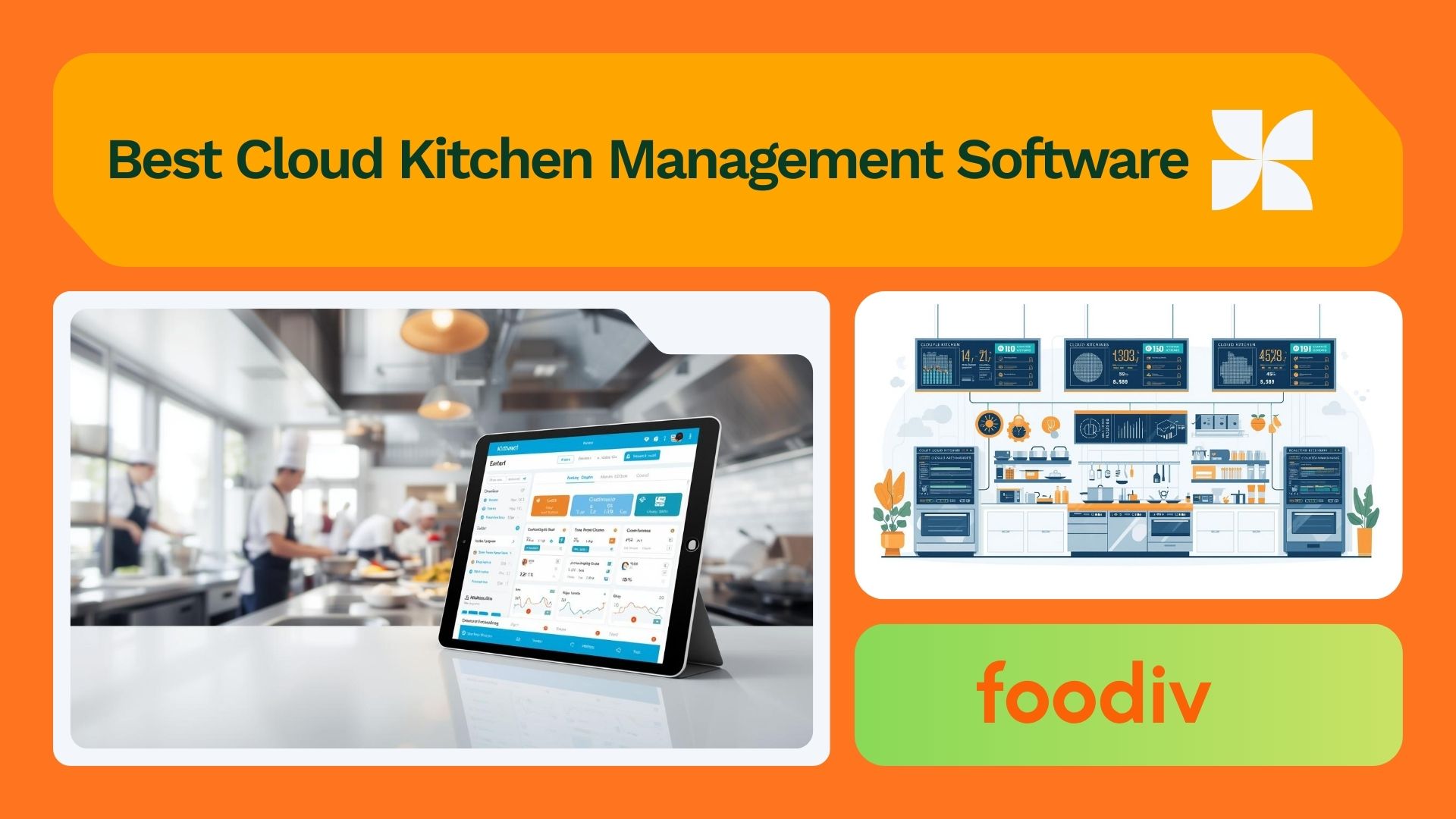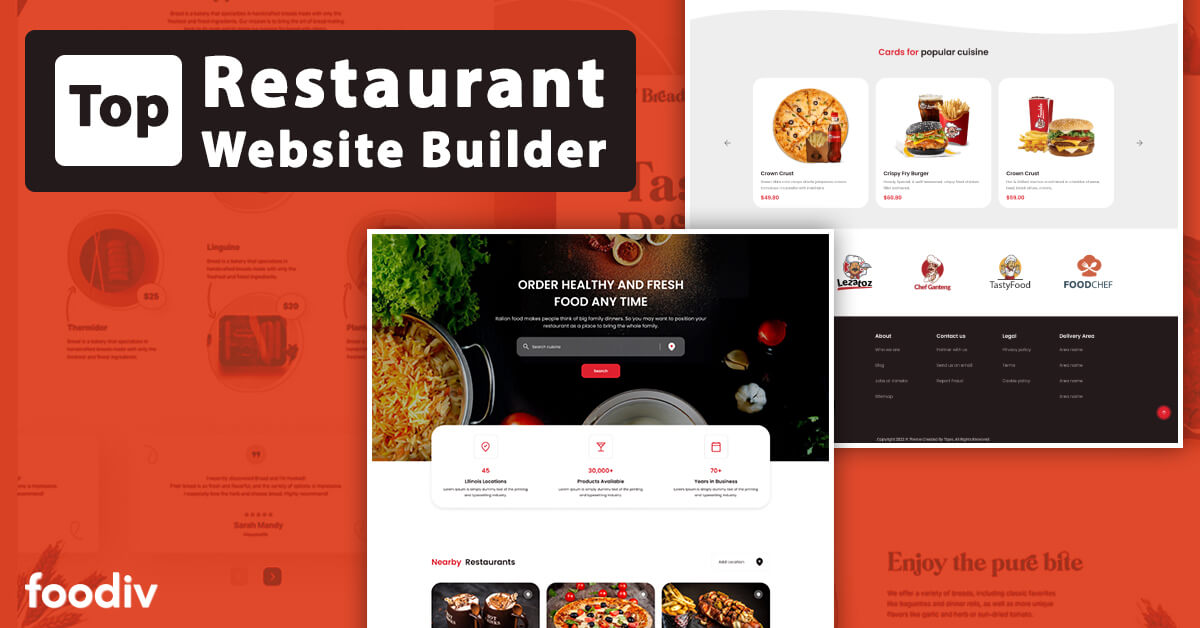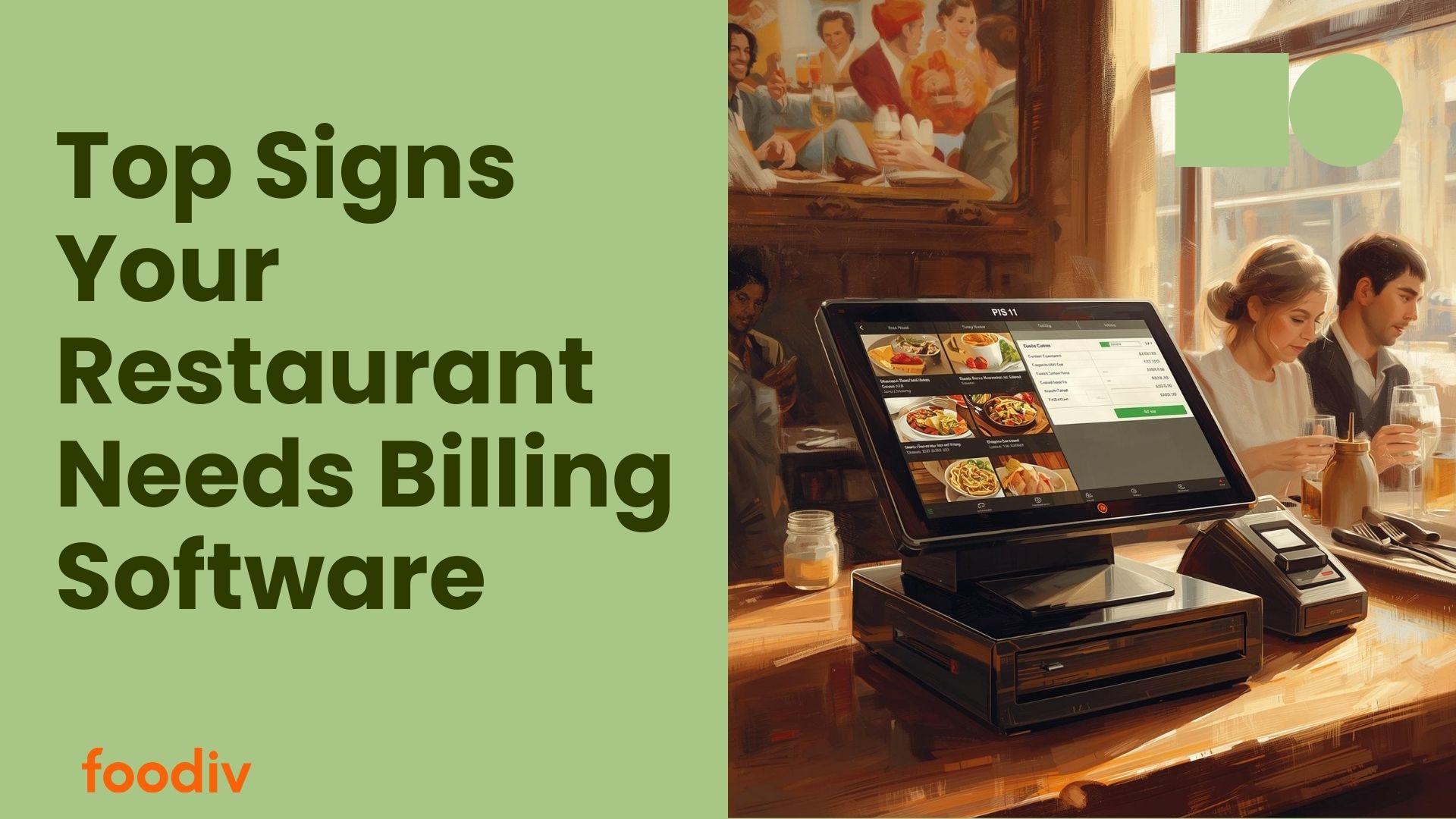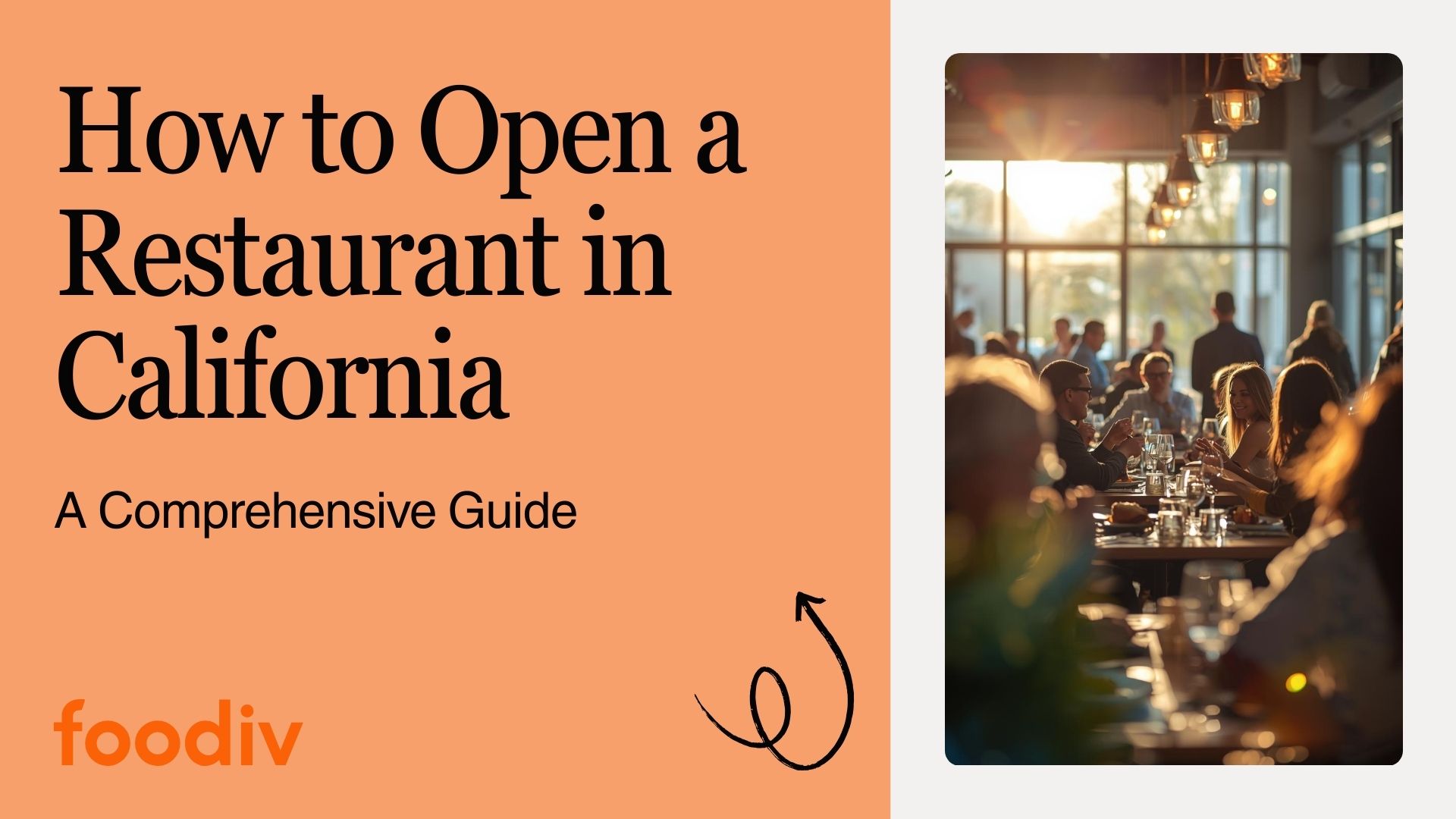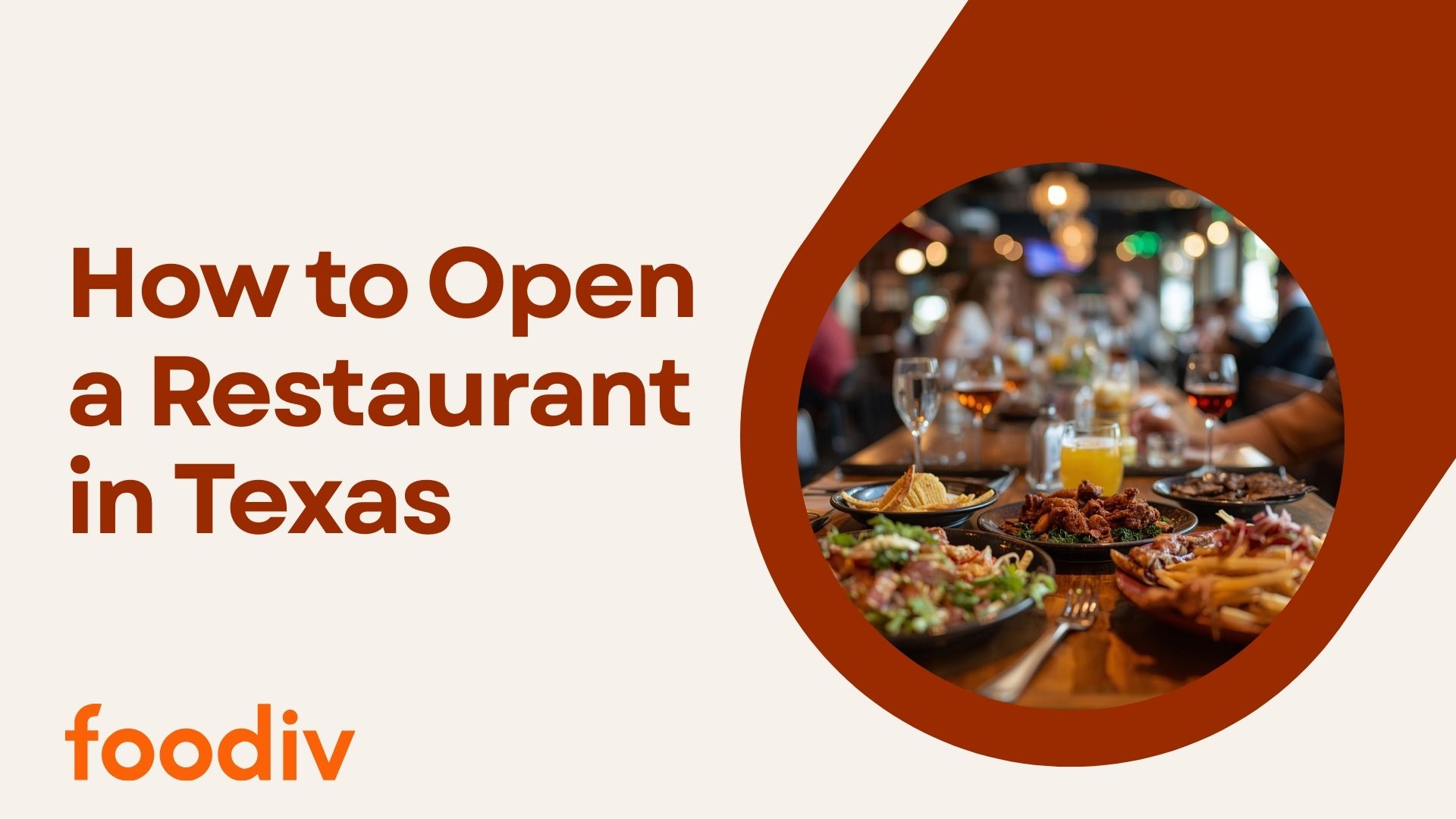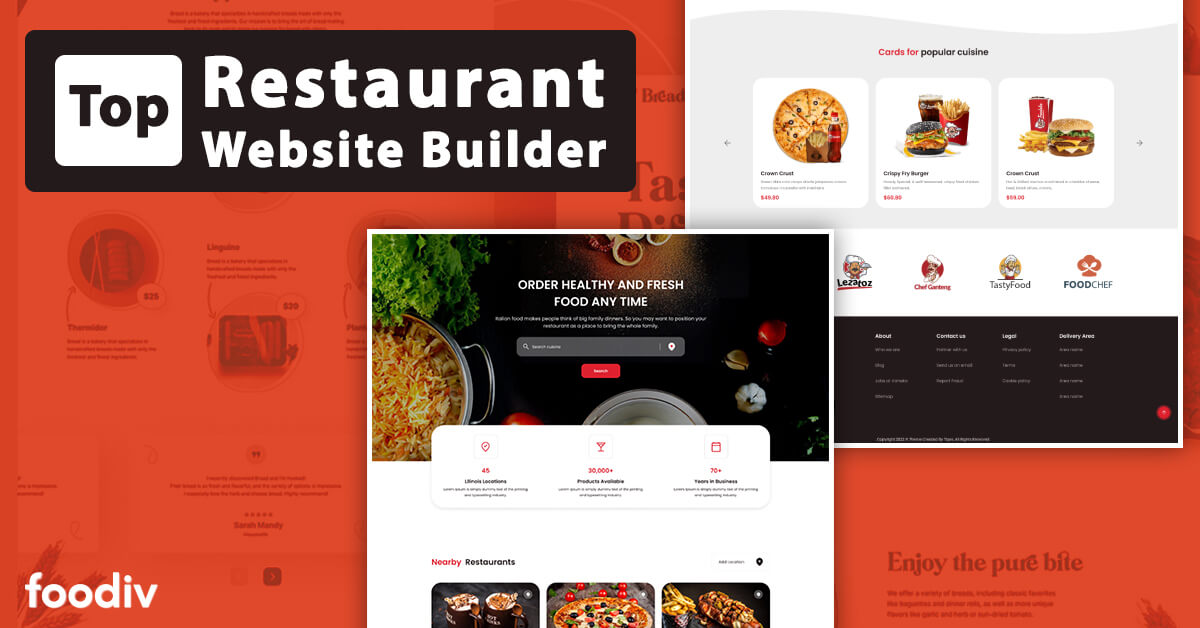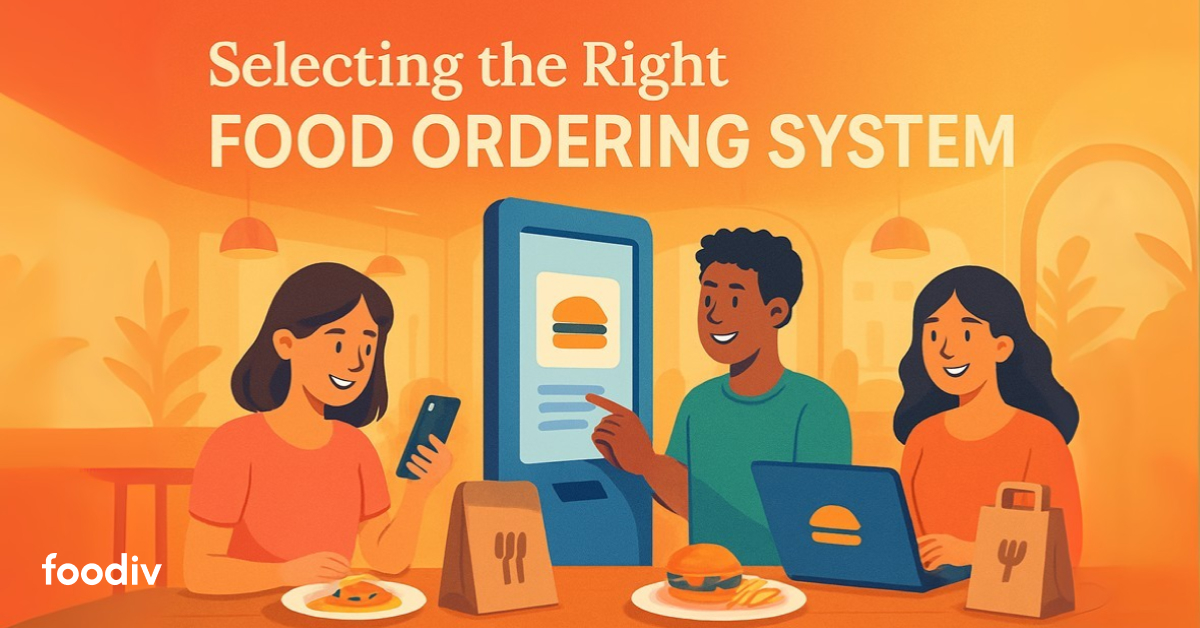
Running a successful restaurant in today’s digital-first world requires more than great food and exceptional service. Customers now expect convenience, speed, and reliability, especially when placing orders online. This is why choosing the right food ordering system is essential for long-term growth and operational efficiency.
A well-designed food ordering system allows your restaurant to accept and manage orders through your own branded platform. It simplifies your workflow, enhances customer experience, and gives you full control over branding, promotions, and customer data. The ability to operate independently from aggregator platforms improves profit margins and builds loyalty.
If you have experienced shrinking revenue due to high commissions or struggled to retain customer information, it may be a sign that Your Restaurant Is Outgrowing Zomato & Swiggy. While third-party aggregator apps may offer short-term visibility, they often restrict your control over operations and brand reputation.
The right food ordering system does more than process online orders. It becomes a strategic asset that helps you increase revenue, improve customer retention, and adapt to changing market conditions. With a system tailored to your business, you can improve speed of service, reduce errors, and deliver a seamless ordering experience across all channels.
This guide will help you explore every important aspect of choosing a food ordering system. From system types and feature evaluation to pricing models and implementation strategies, each section offers insights that will help you make an informed decision based on your restaurant’s specific goals.
Understand Types of Food Ordering Systems
Choosing the best food ordering system starts with understanding what options are available. Each online ordering system serves a different purpose depending on your restaurant’s goals, size, and resources. Whether you want to expand customer reach, improve margins, or automate processes, selecting the right type of system will help you build a stronger and more profitable operation.
Restaurant owners often get overwhelmed by the variety of platforms in the market. Some systems offer complete control, while others provide access to a larger audience. To make the right decision, you need to consider how each food ordering system affects cost, brand visibility, customer loyalty, and long-term growth.
Here are the main types of food ordering systems available to restaurants today.
Branded Direct Ordering Systems
Branded direct ordering systems allow customers to place orders through your own website or mobile application. You control the entire ordering experience from the menu layout to the payment flow and loyalty rewards. These platforms let you maintain your brand identity and provide a consistent experience to your customers.
Unlike aggregator platforms, direct systems do not charge commission per order. This means you retain more of your revenue and can reinvest it into marketing or improving services. You also get full access to customer data, which helps you create personalized offers, track customer preferences, and build long-term relationships.
Restaurants that want to own their digital presence, improve margins, and create a direct connection with customers should strongly consider branded food ordering systems. These platforms are especially beneficial for established restaurants with repeat customers and strong community presence.
Online Food Ordering Aggregators
Aggregator platforms such as Swiggy and Zomato provide restaurants with access to a wide audience through popular third-party applications. Customers can browse multiple restaurants, compare ratings, and place orders in just a few clicks. These platforms handle logistics and customer support, making it easy for restaurants to start accepting online orders.
However, this convenience comes at a price. Aggregators charge commission on every order and limit your access to customer information. This reduces your ability to build a loyal customer base or run personalized marketing campaigns. Additionally, your restaurant may be listed alongside competitors, making it harder to stand out.
Aggregator platforms work well for new restaurants or cloud kitchens that want immediate exposure. They help attract first-time customers, but they are not ideal for restaurants aiming to build a long-term digital brand.
POS-Integrated Food Ordering Systems
Point-of-sale integrated systems connect your online food ordering platform directly with your restaurant’s existing POS. When customers place an order online, it goes straight into your POS system. This reduces manual entry, minimizes human error, and speeds up order processing during busy hours.
POS-integrated systems offer automation and synchronization between your kitchen, inventory, and customer-facing systems. Staff can track orders in real time, and the kitchen can start preparation immediately. Integration with POS also helps you monitor stock levels, analyze sales trends, and manage performance more efficiently.
These systems are ideal for multi-location restaurants, high-volume establishments, and businesses looking for a scalable solution. They support consistent performance across dine-in, takeaway, and delivery operations, making them a smart choice for growth-focused restaurants.
Hybrid Ordering Systems
Some restaurants prefer to combine elements of all three systems. For example, they might use aggregator platforms for reach, branded systems for loyalty, and POS integration for efficiency. This hybrid approach allows restaurants to balance short-term customer acquisition with long-term brand building.
While managing multiple systems can be complex, it gives restaurants flexibility. If you choose this approach, ensure that your platforms can work together or integrate smoothly. Consistency in pricing, menu updates, and customer service across all channels is essential to maintain trust and reputation.
Key Features and Capabilities to Evaluate in a Food Ordering System
A food ordering system should do more than just collect orders. It must streamline operations, enhance customer experience, and help your restaurant grow. Choosing a platform with the right features ensures that your investment delivers long-term value. Every restaurant has different goals, but there are core capabilities that apply to nearly every operation.
Before making a decision, evaluate how each system performs in critical areas such as ease of use, menu management, payment security, integration options, and data insights. These features will determine how well your food ordering system supports daily operations and long-term strategies.
Intuitive User Interface
Customers expect a smooth, fast, and mobile-friendly experience. A good restaurant ordering system provides a clean layout with clear menu categories, high-quality images, and quick access to checkout. Friction during ordering can cause customers to abandon their cart and look elsewhere.
Your team should also find the food ordering system easy to use. Staff members must be able to process and manage orders without confusion. Choose a platform that offers clear dashboards, live order tracking, and simple navigation for both front-of-house and kitchen staff.
Real-Time Menu Management
The ability to update your menu instantly is a must-have. A strong online food ordering system allows you to add or remove items, set time-based availability, adjust prices, and offer discounts without delay. This flexibility helps you respond quickly to stock changes, seasonal promotions, or special events.
You should also be able to manage product modifiers and upsells. Customizations like spice levels, extra toppings, and add-ons improve the customer experience and increase average order value. Look for an online ordering system that supports advanced menu logic without requiring technical knowledge.
Secure and Seamless Payment Options
Security is a top priority for any online transaction. Customers need confidence that their information is safe when placing orders. Your restaurant ordering system should support PCI-compliant payment gateways and use encryption to protect sensitive data.
Offer flexible payment options to meet customer expectations. This includes credit cards, debit cards, UPI, wallets, and possibly even pay-on-delivery options. The payment process should be smooth, without redirects or unnecessary steps that could disrupt the flow.
Integration with Existing Systems
Modern restaurants rely on multiple tools to manage operations. Your food ordering system should integrate with your POS, accounting software, CRM, inventory tools, and delivery partners. This ensures that orders flow smoothly from customer to kitchen without manual data entry.
System integration improves order accuracy, speeds up service, and reduces operational workload. When platforms communicate with each other, your team can spend more time on customer service and less time on repetitive tasks.
Order Notifications and Tracking
Timely notifications help your staff stay on top of incoming orders. Look for an online restaurant system that sends instant alerts through sound, screen flash, or mobile app. You should also be able to track order status from acceptance to completion.
Customers appreciate real-time order tracking. The best food ordering systems provide updates through SMS, email, or app notifications, helping manage expectations and reduce support queries.
Delivery and Pickup Options
A flexible restaurant ordering system supports different fulfillment methods such as delivery, takeaway, curbside pickup, and dine-in preorders. This flexibility allows your restaurant to serve a wider range of customer preferences.
You should also be able to set delivery zones, fees, and estimated delivery times. Some systems allow integration with delivery partners or internal logistics, giving you full control over how food reaches your customers.
Customer Data and Marketing Tools
Access to customer data helps you create personalized experiences. Direct systems give you information about ordering history, preferences, and frequency. Use this data to send targeted offers, reminders, and loyalty rewards.
Built-in marketing tools make it easier to grow your online presence. Look for features like automated email campaigns, coupon codes, referral programs, and loyalty points. These tools improve retention and encourage repeat orders.
Analytics and Reporting
Detailed reporting helps you make better decisions. Your food ordering system should generate reports on sales performance, best-selling items, peak order times, and customer demographics.
With the right insights, you can adjust menu pricing, optimize preparation times, and identify high-value customer segments. Use these reports to guide marketing efforts and improve operations without guesswork.
Food Ordering System’s Cost Structure and Pricing Models
Understanding how a food ordering system charges for its services is just as important as evaluating features. A platform may offer advanced tools, but if its pricing does not suit your budget or growth plans, it can hurt your profitability. Restaurant owners should look beyond basic costs and assess how different pricing models impact day-to-day operations and long-term sustainability.
Online food ordering platforms follow several pricing structures. Each model has its own benefits and limitations depending on the size of your business, order volume, and level of control you want to maintain.
Subscription-Based Pricing
Many restaurant ordering systems use a subscription pricing model. In this model, you pay a fixed monthly or annual fee to use the platform’s services. This fee often includes access to core features such as menu management, analytics, customer support, and system updates.
The subscription model works well for restaurants with steady or high order volumes. Since there are no commissions per order, your profit increases as your number of orders grows. You also gain predictable monthly costs, which makes financial planning easier.
When comparing subscription plans, make sure to check what is included. Some providers offer tiered pricing based on your restaurant size, number of locations, or features required. Higher tiers often unlock marketing tools, integration options, or advanced analytics.
Commission-Based Pricing
Aggregator platforms like Swiggy and Zomato use commission-based pricing. In this model, the provider takes a percentage of every order placed through their platform. Commission rates can vary widely but usually range from 15 percent to 35 percent, depending on the service and city.
This pricing model allows restaurants to start accepting orders with minimal upfront investment. However, the cost grows as your order volume increases. Over time, this reduces your margins and limits reinvestment into operations or customer retention.
Commission-based pricing works best for new restaurants or cloud kitchens that need exposure and do not have the resources to build a direct online ordering system. However, as your business grows, switching to a fixed-cost model may help improve profitability.
Hybrid Pricing Models
Some platforms offer hybrid pricing. These models combine a lower subscription fee with a small commission per order. Hybrid models give restaurants access to features with reduced upfront costs while maintaining partial cost flexibility based on order performance.
Hybrid plans are suitable for restaurants testing a new location or launching an online food ordering system for the first time. They offer a balanced approach while providing the tools needed to grow gradually.
Setup Costs and Onboarding Fees
Not all pricing details are visible upfront. Some providers charge additional fees for system setup, menu uploading, staff training, or domain customization. These one-time costs vary depending on platform complexity and the level of personalization required.
Ask whether the provider includes onboarding support in the base fee or if it comes at an extra charge. Some online restaurant ordering systems offer free setup as part of their promotional packages, while others require a service charge to launch.
Understanding onboarding requirements helps you avoid delays or surprise charges when rolling out the platform.
Contract Terms and Exit Clauses
Before signing up, review the provider’s terms of service. Some platforms require a minimum commitment of three months, six months, or even one year. Others offer month-to-month flexibility, which allows you to test the system before making a long-term commitment.
Pay attention to cancellation clauses. Some contracts impose penalties for early termination, while others restrict your access to customer data if you stop using their services. Always clarify what happens to your customer database, transaction records, and account settings if you decide to switch platforms.
Add-On Services and Hidden Costs
Many providers offer additional services such as in-app advertising, featured listings, or email marketing campaigns. While these can boost visibility, they often come at an added cost. Before purchasing any extras, evaluate their impact on your return on investment.
If your restaurant wants to offer loyalty programs, coupon codes, or SMS updates, ask whether those features are included in your plan or offered as paid upgrades. Also, confirm if there are charges for platform usage beyond a certain number of orders or devices.
Transparent pricing helps you make a confident choice and avoid scaling issues as your order volume grows.
Cost is not just a number on a pricing sheet. It directly affects your profit margins, customer acquisition strategies, and ability to grow. Whether you prefer predictable billing, low entry barriers, or advanced scalability, choose a pricing model that aligns with your restaurant’s financial goals.
Strategic Considerations for Choosing a Food Ordering System
Selecting the right food ordering system involves more than comparing features or reviewing pricing. Strategic alignment with your restaurant’s goals, customer behavior, and growth potential ensures that the platform contributes to long-term success. A system must fit your brand, operations, and marketing approach while supporting future expansion.
Here are the strategic factors to consider when evaluating any food ordering system.
Understand Your Customer Base and Their Preferences
Each restaurant serves a specific audience. Identifying who your customers are and how they prefer to order helps in selecting a food ordering system that suits their expectations.
Urban customers often rely on aggregator platforms due to convenience. Local or community-based audiences may prefer ordering directly from your branded website or mobile app. Choose a platform that supports different fulfillment methods such as delivery, pickup, or preordering.
Meeting your customers where they are improves satisfaction and repeat orders.
Evaluate Order Volume and Scalability
Restaurants with high order volumes require platforms that offer speed, reliability, and automation. A basic tool may support small cafes or food stalls. However, large operations benefit from POS-integrated systems that streamline online and in-house processes.
If your business plans to grow, make sure the food ordering platform can manage multiple outlets, update menus across locations, and generate combined performance reports.
Scalability protects your investment and prevents the need for frequent platform changes.
Prioritize Brand Ownership and Direct Relationships
Aggregator platforms limit branding. Customers associate the ordering experience with the app, not with your restaurant. This reduces your control and makes it harder to build lasting relationships.
A branded restaurant ordering system lets you own your digital presence. You can highlight your menu, control presentation, and personalize communication. You also retain access to customer data, which allows for smarter marketing and improved loyalty.
This direct connection helps you grow a loyal customer base that chooses you over competitors.
Balance Exposure with Profitability
Aggregator platforms deliver reach, but they come with high commissions. Branded systems offer higher margins, but require marketing efforts to attract customers.
A blended approach works best. Use aggregators for new customer acquisition and direct ordering systems to improve profitability from repeat business. Offer exclusive discounts or loyalty points to encourage customers to order directly.
Balancing exposure and control helps you scale while protecting profit.
Ensure Operational Compatibility
Choose a food ordering solution that works well with your current tools. Check whether it integrates with your POS, inventory software, and kitchen workflow.
The platform must also suit your team’s capabilities. Staff should be able to manage orders quickly, update menus easily, and handle delivery or pickup processes smoothly.
Operational fit ensures faster onboarding and avoids disruptions.
Maximize Customer Data and Marketing Potential
Access to customer data improves decision-making. Use insights to launch targeted offers, upsell popular items, and recover abandoned carts.
Select a food ordering system that integrates with SMS, email, and loyalty platforms. It should let you track repeat customers, average order value, and campaign success.
Marketing integration turns your food ordering software into a revenue-generating tool, not just a transaction processor.
Implementation and Workflow Planning for Food Ordering System
Choosing the right food ordering system is a key step. However, proper implementation and workflow planning determine how smoothly it functions in real operations. Without a clear rollout strategy, even the best platform can lead to confusion, delays, and service errors.
To ensure successful adoption, focus on staff training, process optimization, and operational readiness. When your team is prepared and systems are aligned, your restaurant can deliver faster service and better customer experiences.
Prepare Your Staff with Proper Training
Staff adoption is one of the most important parts of implementing a new restaurant ordering system. Front-of-house, kitchen, and delivery personnel must understand how to handle orders efficiently using the new platform.
Start by selecting a food ordering software that offers guided tutorials, onboarding support, and a user-friendly interface. Provide role-specific training so each team member knows how to process, confirm, and complete orders through the system.
Make sure your staff understands how to handle real-time updates such as menu changes, special requests, and payment issues. A few hours of focused training can prevent service disruptions and improve overall order accuracy.
Test the System Before Full Launch
Conduct a soft launch to identify any operational bottlenecks. Accept a limited number of orders from real customers and observe how the software performs under actual conditions.
Test various order types such as dine-in preorders, takeaways, and deliveries. Make sure that notifications, receipts, and kitchen tickets are generated without delay. Monitor kitchen workflow, packaging flow, and front-end processes closely.
Use feedback from this phase to make improvements before going fully live. Testing ensures food ordering system reliability and builds confidence among staff.
Set Up a Dedicated Pickup and Delivery Zone
If your restaurant handles a high volume of takeaway or delivery orders, create a specific zone for managing these transactions. A separate counter or shelf helps reduce crowding and improve customer satisfaction.
Ensure this area is clearly labeled and accessible for both customers and third-party delivery partners. Assign team members to monitor pickups during busy times to ensure correct order handoffs.
A well-managed pickup zone improves speed, prevents order mix-ups, and creates a smooth handover process.
Establish a Clear Workflow Across Roles
Efficient food ordering solutions depend on seamless coordination between roles. Clearly define who accepts orders, who prepares them, and who hands them off for pickup or delivery.
Use digital tools or kitchen display systems to improve communication. Ensure that real-time order status is visible to relevant staff so that everyone stays updated on progress.
Role clarity reduces errors and shortens order cycle times.
Organize Packaging Materials and Resources
Proper packaging is vital for online food ordering. Keep sufficient stock of bags, containers, seals, and utensils. Label each order clearly with customer details and special notes to avoid confusion during dispatch.
Make sure packaging materials suit the type of food served. Items must stay fresh, intact, and presentable during transit. Organize these materials near the pickup zone for quick access.
Well-organized packaging improves efficiency and reflects professionalism.
Monitor Performance During Rollout
Track early-stage metrics such as order completion times, customer feedback, and order accuracy. Identify slow points or recurring issues and address them quickly.
Review staff performance and customer experience during the first few weeks. Ask for customer reviews or run quick surveys to gauge satisfaction with the new ordering process.
Monitoring helps you fine-tune operations and maximize the value of your food ordering system from the beginning.
Smooth implementation leads to faster adoption, better service, and higher customer satisfaction. Once your workflows are aligned with your new platform, your restaurant will operate more efficiently and confidently handle increased order volume.
Measuring Performance and Optimization of the Food Ordering System
Installing a food ordering system is only the beginning. To ensure it delivers real value, restaurants must measure how well it performs and optimize operations based on results. Data-driven improvement helps increase efficiency, boost customer satisfaction, and maximize return on investment.
Monitoring system performance provides visibility into order flow, staff productivity, and customer behavior. It also highlights areas where you can save time, reduce costs, or generate more revenue.
Track Order Accuracy and Completion Time
One of the most important performance indicators is order accuracy. Mistakes lead to refunds, complaints, and poor reviews. Use the platform to track how often orders are completed correctly and on time.
POS-integrated platforms reduce errors by sending orders directly to the kitchen. There is no manual entry, which helps staff focus on preparation and delivery. Accurate orders increase customer satisfaction and encourage repeat business.
Also measure how long it takes to complete an order—from placement to pickup or delivery. A consistent completion time shows that your team is handling volume efficiently.
Monitor Customer Feedback and Satisfaction
Online food ordering platforms should support customer reviews, feedback forms, or ratings. Use this information to evaluate food quality, service speed, packaging, and overall experience.
Respond to feedback promptly. Thank customers for positive reviews and offer solutions when issues arise. Listening to your audience helps you improve service and build stronger relationships.
Use trends in feedback to identify training needs, revise workflows, or update menu items.
Analyze Repeat Order Rates
A growing number of repeat customers is a positive sign. Use the food ordering system’s analytics to track how many users return to place a second or third order. A high repeat rate means your service is consistent and your value is clear.
If you see low repeat order rates, explore loyalty programs, exclusive offers, or improved follow-up communication. Encourage direct ordering through incentives and build a strategy that promotes long-term engagement.
Evaluate Channel Performance
If your restaurant accepts orders through multiple channels such as aggregators, branded websites, and social media links, compare how each performs. Look at order volume, average value per order, and customer retention from each source.
This data helps you focus marketing efforts on the most profitable channels. For example, if your branded site produces higher repeat rates, invest more in SEO, email campaigns, or referral incentives for that channel.
Reallocate marketing resources to platforms that drive the most value over time.
Optimize Your Menu Based on Sales Data
Menu performance data reveals which items sell best, which ones underperform, and which combinations drive higher average order values. Use this insight to streamline offerings, improve pricing, and upsell effectively.
If certain items create delays or receive frequent complaints, consider revising them or removing them from peak-hour availability. Promote high-margin items with visuals and featured sections.
Continual menu optimization improves kitchen flow and increases profit margins.
Measure Marketing Campaign Results
Many restaurant ordering systems support coupon codes, email campaigns, SMS blasts, and loyalty tracking. Measure how each campaign performs in terms of order volume, redemption rates, and revenue growth.
Use A/B testing for messages and offers. Track which customer segments respond best to which campaigns. With time, you will understand what drives action and how to personalize marketing for better results.
Optimization turns your online food ordering system into a growth engine instead of just a backend tool.
Review System Reliability and Downtime
A reliable food ordering system must stay operational during business hours. Monitor for any instances of downtime, delayed notifications, or transaction errors.
Food ordering system reliability affects trust. Customers will not return if the platform fails during checkout or confirmation. Choose providers that offer uptime guarantees and responsive technical support.
Regular maintenance, updates, and feedback sessions with your provider also contribute to better system stability.
Measuring performance gives your restaurant the power to refine processes, improve service, and increase revenue. The best food ordering systems offer real-time analytics and reporting tools that help you make informed decisions at every stage.
Switch to Food Ordering System
Many restaurant owners start with aggregator platforms for exposure and convenience. Over time, however, reliance on these platforms can become a challenge. High commission rates, limited branding, and lack of customer data restrict growth and profitability. Transitioning to a direct food ordering software gives restaurants more control, better margins, and deeper customer connections.
Making the switch may seem complex, but with proper planning, your restaurant can transition smoothly and start reaping the benefits of independence.
Recognize When It Is Time to Switch
Several signs indicate that it is time to take ownership of your ordering platform. If your restaurant is losing profits due to rising commissions or struggling to retain loyal customers, consider moving to a direct system.
Other signs include limited marketing control, poor access to customer data, and restrictions on how your menu is displayed. Restaurants with strong community presence or repeat business can benefit significantly from having a branded online food ordering system.
Learn more about how and when to Switch to food ordering system to improve profit margins and customer relationships.
Build a Transition Plan
Switching platforms should be a structured process. Start by researching food ordering systems that align with your business goals. Choose one that integrates with your existing POS, supports your operational needs, and offers marketing features.
Before going live, test the new platform with a small group of customers. This helps your team adjust workflows and handle issues before a full rollout. Gather feedback and make improvements.
Keep both platforms active during the transition period. Gradually shift traffic from third-party apps to your direct platform using clear communication and customer incentives.
Promote Your New Ordering Channel
To succeed with a branded system, customers need to know it exists. Use signage, packaging inserts, social media, and staff suggestions to promote your new ordering platform.
Offer exclusive discounts, cashback, or loyalty points for customers who order directly. These incentives encourage behavior change and increase order frequency through your own channel.
Over time, the share of direct orders will grow. This gives your restaurant more control over the customer experience and builds a strong digital foundation for future campaigns.
Train Staff and Prepare Internal Systems
Train your team to manage the new platform confidently. Staff should know how to accept, track, and complete orders using the new interface. Create a clear workflow for kitchen prep, pickup, and customer updates.
Also, ensure your POS, inventory, and CRM systems are connected for smooth operations. This saves time and improves order accuracy during busy periods.
Internal preparation makes the switch seamless and ensures a positive experience for both staff and customers.
Monitor Results and Adjust
Track performance from day one. Measure order volume, repeat customers, average order value, and customer satisfaction. Use this data to fine-tune marketing campaigns and operational processes.
Monitor customer feedback closely. Improve areas such as payment experience, delivery time, and menu clarity to create a platform that truly supports growth.
With time, your direct online food ordering system will become a central part of your restaurant’s success.
Checklist Before You Choose Food Ordering System
Choosing the right food ordering system for your restaurant is a strategic decision that influences your operations, brand image, and customer relationships. A well-structured checklist ensures that your platform delivers both immediate functionality and long-term value.
Before making a commitment, evaluate the platform across the following key areas. Use this checklist to guide discussions with providers and avoid common implementation challenges.
1. Integration with Existing Tools
Ensure the system integrates with your current POS, accounting, CRM, and inventory management tools. This avoids manual tasks and keeps your workflow seamless across all departments.
2. Real-Time Menu Control
Check that you can edit your menu in real time. You should be able to add items, update prices, and apply special offers without delay.
The food ordering system must support product modifiers, time-based availability, and combo options to help increase order value.
3. Secure and Flexible Payment Options
Verify that the online food ordering system supports secure payment gateways. Look for compatibility with credit cards, UPI, wallets, and debit cards.
Transactions should be encrypted and smooth for both customers and staff.
4. Customer Data Ownership
Ask whether you have full access to customer data including names, emails, order history, and preferences. This access helps you build loyalty and run effective marketing campaigns.
Data ownership supports long-term customer retention and business intelligence.
5. Reliable Customer Support
Check the provider’s support options. You should have access to training materials, a responsive helpdesk, and clear escalation channels in case of technical issues.
Fast and reliable support minimizes downtime and protects the customer experience.
6. Mobile Optimization and App Access
Most customers order using mobile devices. Ensure the ordering system is responsive and offers mobile app compatibility or a web-based mobile version.
The platform should deliver a fast and intuitive user experience on all devices.
7. Real-Time Notifications and Order Tracking
Look for order tracking features and live notifications for your team. The online system should instantly alert staff when a new order arrives and update order status for the customer.
These features improve efficiency and reduce wait times.
8. Analytics and Reporting Features
Choose a food ordering system that tracks key metrics such as sales, repeat orders, best-selling items, and customer demographics.
Use this data to adjust your menu, streamline operations, and improve performance over time.
9. Scalable Infrastructure
Consider whether the food ordering system can grow with your restaurant. If you plan to open more locations or expand delivery services, the platform must support multi-branch management and order consolidation.
Scalability helps protect your investment and supports long-term expansion.
10. Transparent Pricing and Terms
Understand the complete pricing structure including setup fees, monthly subscriptions, transaction charges, and optional services.
Check contract length, cancellation policies, and any hidden fees that may apply later.
This checklist will help you compare providers, ask the right questions, and avoid surprises. A thoughtful decision today ensures your food ordering system supports efficiency, customer satisfaction, and long-term success.
Conclusion
A powerful food ordering system plays a central role in modern restaurant success. It simplifies operations, improves customer experience, and strengthens your brand across digital platforms. Choosing the right platform requires careful evaluation of features, pricing, scalability, and operational fit.
Your restaurant must go beyond short-term visibility and build long-term value. The right decision helps reduce costs, increase repeat business, and give you full control over your customer relationships. From intuitive design and real-time reporting to marketing tools and seamless POS integration, each detail contributes to your overall growth strategy.
Whether you are just starting or preparing to scale, now is the time to rethink your approach. Moving away from aggregator dependency gives you the freedom to own your digital presence and customer journey.
Start building a food ordering system that works for your brand, your customers, and your bottom line. Take the next step by exploring a leading food ordering system that supports your goals with the technology and flexibility your restaurant deserves.


